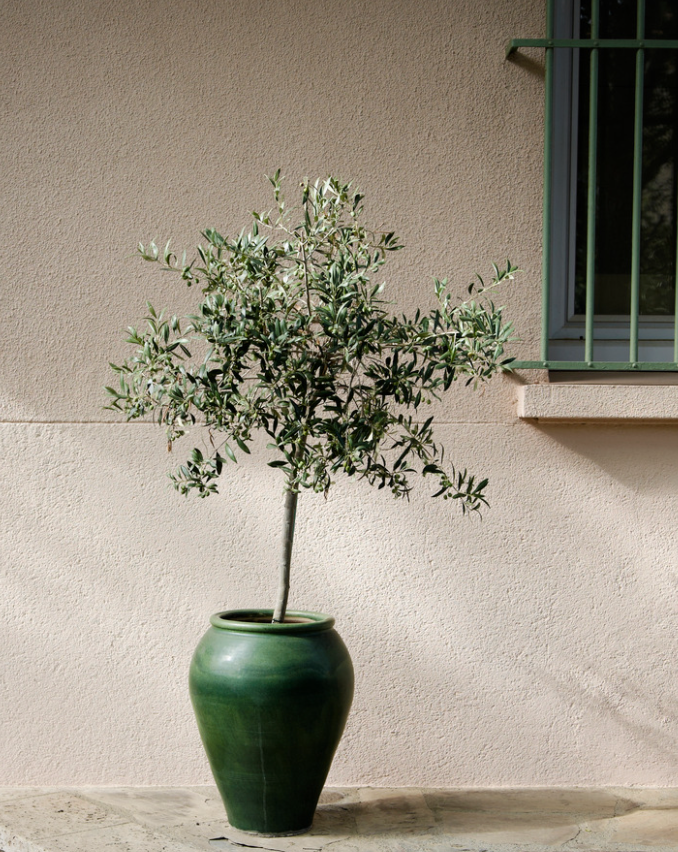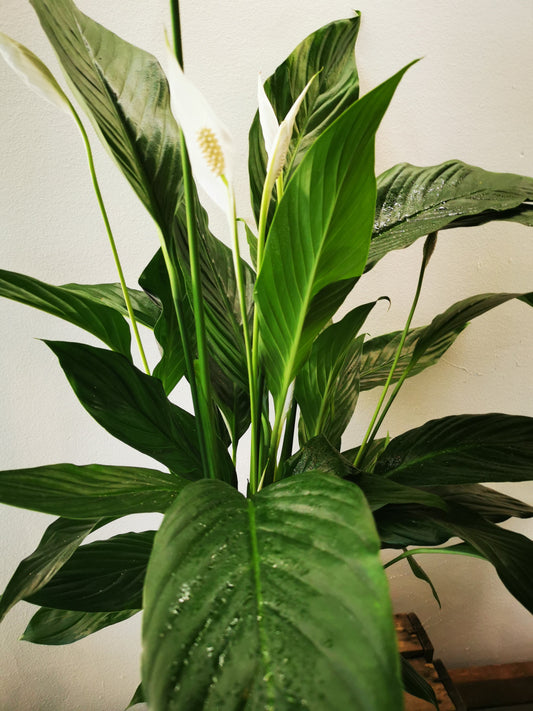
How to care for an olive tree
Share
General and origin
Did you know that you can simply put an olive tree in your home? It not only provides delicious olives but also as a decorative plant. The Olea Europaea or the olive tree is known for its products such as olives and olive oil. Although it is also a decorative plant for both indoors and outdoors. A versatile tree. The Olea Europaea belongs to the Oleaceae family (olive family) and is one of the oldest trees. There are about 30 species. Originally they come from countries around the Mediterranean Sea but can now also be found in gardens and living rooms all over the world. If you are looking for a beautiful and versatile tree for your garden or living room, an olive tree is a good option!
How do you care for the olive tree?
In general, the olive tree is not a difficult plant to maintain. Only in the summer does it require a bit more care. Below you can read how to care for it.
How much light does the Olive Tree need?
The olive tree is a plant that originally comes from warm southern countries. This means that it likes to be in full sun . This also makes it grow better. Be careful in the winter that you bring it inside on time and do not leave it in the cold.
What temperature should the olive tree be kept in?
The temperature is very important for this plant. Because it likes warmth and sunlight, you have to take extra good care of it during the cold, dark winter days. It originally comes from sunny Spain and Portugal. There they grow big and fast, but here it is more difficult. Do you want an olive tree that is in the ground to survive the winter? Is the temperature below -7 °C? Then it is best to dress it with a protective cover that will protect it from frost. If you have one in a pot, it is best to move it indoors to a light spot without direct sunlight. Let it get used to the sun.
How much water does the olive tree need?
Because this plant likes to get full sun on its leaves, it will also need water more often . It likes a soil that is always slightly moist . In the summer, you can give it a sip of water 2 to 3 times a week . Make sure that it is not left with wet feet. This will cause root rot. Because of the warm climate where the plant comes from, it is not necessary to spray the leaves or place it in a moist environment. It can even cause it to burn in the sun. In the winter, you should only water it when the soil feels very dry.
Repotting an olive tree
It is best to repot the olive tree every 2 years in the spring or immediately after purchase. Choose a flower pot that is about 20% larger than the previous one so that it has enough space to grow. If you want to put it outside, it is best to put it in a large planter or plant it in the open ground . Then sprinkle hydro grains in the flower box and make a hole in the bottom of the pot so that the water can drain away properly.
Common Olive Tree Problems
The leaves of my olive tree are changing color
Yellow or brown leaves? This is often a sign that your plant is getting too much water or too little sunlight. Give your plant less water. Are you not sure when to water it? Stick your finger or a stick a few centimeters into the soil, when the soil is dry it needs water. If it is wet you do not need to water yet?
Also make sure it gets enough sunlight . Place it in a spot on a southern window .
Dead branches/leaves in your Olive tree
You can remove this by pruning them off . This way the plant can put its energy better into the healthy parts of the plant. And it will also look nicer.
Bugs in your Olive Tree
The olive tree can be sensitive to mealybugs and scale insects . You can recognize this when there are white 'fluffs' on the leaves and on the plant. In our webshop and in the store we sell a spray that combats these lice .
Want to read more about certain plants? Check out our webshop for more plants or more blogs . Or our Instagram page to stay up to date! Or do you have questions? Don't hesitate to contact us via hello.plantrekkers@gmail.com or DM us on Instagram.
Greetings
The Planttrekkers



